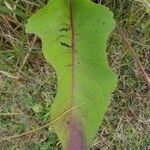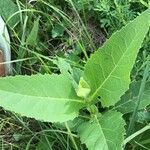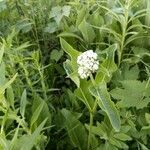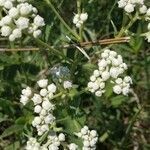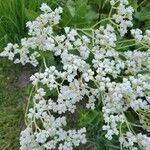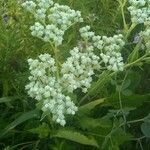Perennials, 30–60(–100+) cm. Leaf blades ovate to lanceolate, 30–350+ × 20–120+ mm, margins usually crenate to serrate, sometimes coarsely toothed or somewhat lobed (then mostly toward bases), faces hispid to hirtellous or ± scabrous, gland-dotted. Heads radiate, borne in corymbiform to paniculiform arrays. Peduncles 1–8(–12+) mm. Phyllaries: outer 5(–6) lanceolate to broadly ovate, 3–5 mm, inner 5(–6) ± orbiculate, 4–6 mm. Pistillate florets 5(–6); corolla laminae ovate to oblong or orbiculate, 1–2+ mm. Disc florets 15–35+. Cypselae ± obovoid, 3–4+ mm; pappus-like enations 0 or 2(–4), erect to spreading, ± subulate or threadlike, fragile, 0.3–0.6+ mm. 2n = 72.
A herb.
